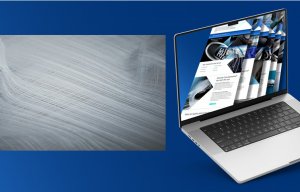
Lighter body armour with Dyneema SB301
Multiple global government initiatives are underway to reduce the weight of personal protective equipment for military, law enforcement and security personnel, in order to deliver top protective performance combined with usability. DSM Dyneema, the manufacturer of ultra high molecular weight polyethylene (UHMwPE) fibre Dyneema, believes the adoption of next-generation lighter material technologies is an answer to this growing demand. The company reports that the use of UHMwPE materials in body and vehicle protection will show double-digit growth in the next five years.

31st October 2013
Innovation in Textiles
|
Bergen op Zoom
Multiple global government initiatives are underway to reduce the weight of personal protective equipment for military, law enforcement and security personnel, in order to deliver top protective performance combined with usability.
DSM Dyneema, the manufacturer of ultra high molecular weight polyethylene (UHMwPE) fibre Dyneema, believes the adoption of next-generation lighter material technologies is an answer to this growing demand. The company reports that the use of UHMwPE materials in body and vehicle protection will show double-digit growth in the next five years.
“To address the pressing issue of weight reduction in both body armour and vehicle armour applications while providing the best ballistic performance, new materials need to deliver significant improvements and remain affordable,” said Shitij Chabba, Global Segment Director, Life Protection. “The increased concern for security around the globe and higher threat levels on the street call for greater flexibility to optimise armour protection and comfort.”
Two important and ongoing trends in law enforcement are contributing to the demand for personal protective gear that can deliver both higher ballistic performance and lighter weight, DSM Dyneema reports.
Law enforcement is shifting to the National Institute of Justice (NIJ) 06 standard. In 2008, NIJ Standard 0101.06, Ballistic Resistance of Body Armour signalled the latest evolution in standards by which law enforcement protective vests are measured.
It establishes new and updated minimum performance requirements and test methods for the ballistic resistance of personal body armour designed to protect the torso against gunfire. Dale Stockton, editor-in-chief of Law Officer Magazine, explained: “The new 06 standards presented some real challenges to manufacturers and there have been some early comments that 06-compliant armour was more rigid and less flexible.”
Some officers avoid wearing body armour for reasons of comfort. Mandatory wear policies are becoming the norm across the country, but some officers are still going without armour because of rationalised behaviour or exceptions such as an administrative assignment or a training day.
As many as 40% of uniformed police officers go to work without wearing body armour. This varies dramatically by area of the country, type of assignment and mission of the law enforcement agency. Stockton commented: “When we do Below 100 training, we always ask about the excuses for not wearing body armour. The top two answers are always: “It’s hot” and “It’s uncomfortable”.”
According to the company, its Dyneema UHMwPE fibre is 40% lighter than competitive materials and is said to offer exceptional ballistic protection as well as excellent resistance to moisture and chemicals, and flexibility for enhanced comfort and agility for the body armour.
DSM Dyneema will showcase the new Dyneema Force Multiplier Technology products from the company’s Radical Innovation platform at Milipol 2013, that will be held from 19-22 November in Paris.
“After decades of working closely with our global customers to innovate advanced new materials for improved personal and vehicle protection, DSM Dyneema recognises that the fundamental demands for improved safety and comfort are more important than ever before,” said Chabba.
“Our strong leadership position is directly linked to our long history of listening and understanding the market needs, and proactively working to develop new breakthroughs in UHMwPE fibre technology.”

Business intelligence for the fibre, textiles and apparel industries: technologies, innovations, markets, investments, trade policy, sourcing, strategy...
Find out more